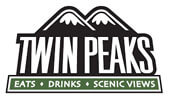Your Resume – The Ticket to an Interview
Your resume is not a job description it is a ticket to an interview!
A resume is a very important tool in your job seeking process. It can be considered as your first impression with your next possible employer.
Depending on the size of corporations you have targeted, a Human Resource Department may have as many as 30+ recruiters attempting to sort through THOUSANDS of resumes for a number of open positions.
Or, on the other hand, if you have targeted smaller corporations you may have one recruiter sorting through hundreds of resumes for one specific position.
In either situation, you can see why your resume must get attention in order for hiring authorities to select you to have the chance to interview for their job opportunity.
Here is a very BASIC list of rules to follow when creating your resume:
1. Use a good brand of paper. I recommend using white, off-white, beige, or light gray. Bright yellow does catch the eye, but it also can be conceived as a bit too much. The content is much more important than the paper.
2. If at all possible try to keep your resume to one page. If you have 20+ years of experience it can be difficult, do the best you can.
3. This suggestion relates to question #2. If you do have 20+ years of working experience, the general rule is to only go back ten years and list that experience. There are exceptions to this rule. For example, if you had one of your most successful experiences 15 years ago and that experience relates directly to the positions you are targeting, add it to your resume. Another example would be that you have recently had numerous jobs in a short period of time, but you have more stability earlier in your work history, add it to your resume.
4. Make sure that all of your contact information is current. List your cell phone as well.
5. Make sure that you have someone else proof your resume for any type of errors.
6. Your objective is very important. It should be short, direct and tailored to the specific position and company you are applying for.
7. In your skills section, be TRUTHFUL! If you misrepresent yourself and get hired, you will be job searching again soon after your start date.
8. Start with your most recent work experience and work backward.
9. List the name of the company you worked for and underline it.
10. Under the company name put your title.
11. If you have job stability, put your dates where they stand out. There are recruiters that actually look at the dates before anything else. Lack of past job stability is one of the most common screening factors on a resume. If you lack stability then try to make the dates smaller or somewhere where they are not a focus point.
12. Under your title give a short job description of what your duties and responsibilities were.
13. THE MOST IMPORTANT PART OF YOUR RESUME IS: YOUR ACCOMPLISHMENTS!
Once you have given your responsibilities for each position you have listed on your resume, then you need to list under each one three to five accomplishments.
When a recruiter/hiring authority looks at numerous resumes, the responsibilities for many of the applicants may be very similar and sometimes look exactly the same. Therefore, if YOU have an ACCOMPLISHMENTS section, YOU WILL STAND OUT!
Accomplishments can be any of the following: tasks you have mastered, how you saved your employer time or money, any awards you received, any promotions, contests you have won, etc.
The simple structure of a resume:
– Contact information
– Job objective
– EDUCATION, SKILLS & WORK HISTORY are completely dependent upon where YOU personally offer the most strengths.
– Finally, at the bottom – References Upon Request
MAKE YOUR RESUME A WINNING TICKET!
Back







